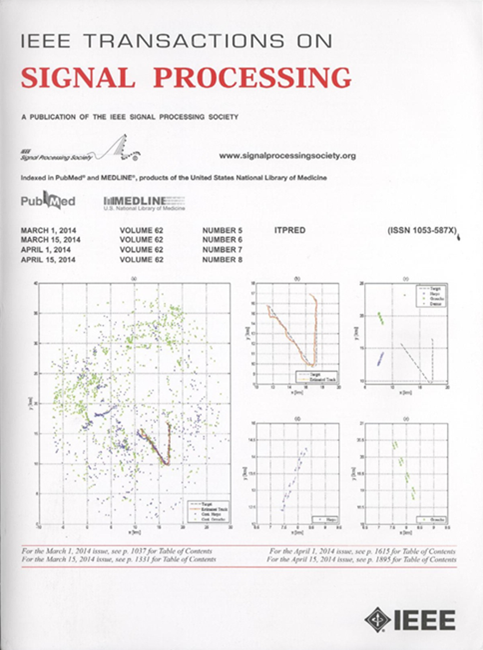连续时间信号的鲁棒在线重构
IF 4.6
2区 工程技术
Q1 ENGINEERING, ELECTRICAL & ELECTRONIC
引用次数: 0
摘要
动物的感觉刺激被神经元编码成脉冲序列,具有稀疏性、能量效率和高时间分辨率等优点。本文提出了一个信号处理框架,该框架将连续时间信号确定性地编码为生物上可行的尖峰序列,并解决了可表示的信号类别和重构界的问题。该框架考虑通过使用具有各种卷积核的卷积-阈值机制的神经元集合产生的尖峰序列对信号进行编码。在移位核函数的Hilbert空间中导出了从尖峰串到信号重构的反问题的封闭解,保证了广义有限创新率(FRI)类信号的稀疏表示。此外,受生物系统实时处理的启发,制定了最优重建的有效迭代版本,仅考虑过去峰值的有限窗口,确保技术对病态编码的鲁棒性;给出了窗重构对最优解的收敛性保证。在大型音频数据集上的实验表明,在峰值速率低至奈奎斯特速率的三分之一时,该方法具有出色的重建精度,同时在低峰值速率下,与最先进的稀疏编码技术相比,显示出明显的竞争优势。本文章由计算机程序翻译,如有差异,请以英文原文为准。
Robust Online Reconstruction of Continuous-Time Signals From a Lean Spike Train Ensemble Code
Sensory stimuli in animals are encoded into spike trains by neurons, offering advantages such as sparsity, energy efficiency, and high temporal resolution. This paper presents a signal processing framework that deterministically encodes continuous-time signals into biologically feasible spike trains, and addresses the questions about representable signal classes and reconstruction bounds. The framework considers encoding of a signal through spike trains generated by an ensemble of neurons using a convolve-then-threshold mechanism with various convolution kernels. A closed-form solution to the inverse problem, from spike trains to signal reconstruction, is derived in the Hilbert space of shifted kernel functions, ensuring sparse representation of a generalized Finite Rate of Innovation (FRI) class of signals. Additionally, inspired by real-time processing in biological systems, an efficient iterative version of the optimal reconstruction is formulated that considers only a finite window of past spikes, ensuring robustness of the technique to ill-conditioned encoding; convergence guarantees of the windowed reconstruction to the optimal solution are then provided. Experiments on a large audio dataset demonstrate excellent reconstruction accuracy at spike rates as low as one-third of the Nyquist rate, while showing clear competitive advantage in comparison to state-of-the-art sparse coding techniques in the low spike rate regime.
求助全文
通过发布文献求助,成功后即可免费获取论文全文。
去求助
来源期刊

IEEE Transactions on Signal Processing
工程技术-工程:电子与电气
CiteScore
11.20
自引率
9.30%
发文量
310
审稿时长
3.0 months
期刊介绍:
The IEEE Transactions on Signal Processing covers novel theory, algorithms, performance analyses and applications of techniques for the processing, understanding, learning, retrieval, mining, and extraction of information from signals. The term “signal” includes, among others, audio, video, speech, image, communication, geophysical, sonar, radar, medical and musical signals. Examples of topics of interest include, but are not limited to, information processing and the theory and application of filtering, coding, transmitting, estimating, detecting, analyzing, recognizing, synthesizing, recording, and reproducing signals.
 求助内容:
求助内容: 应助结果提醒方式:
应助结果提醒方式:


